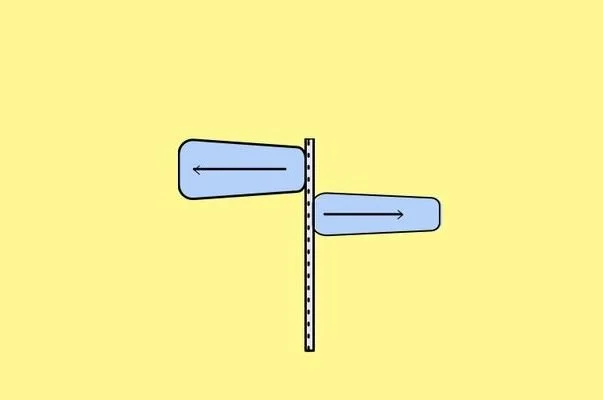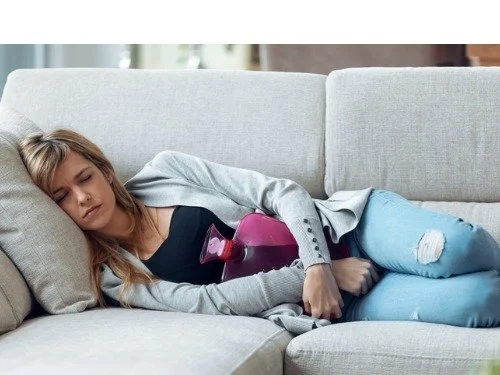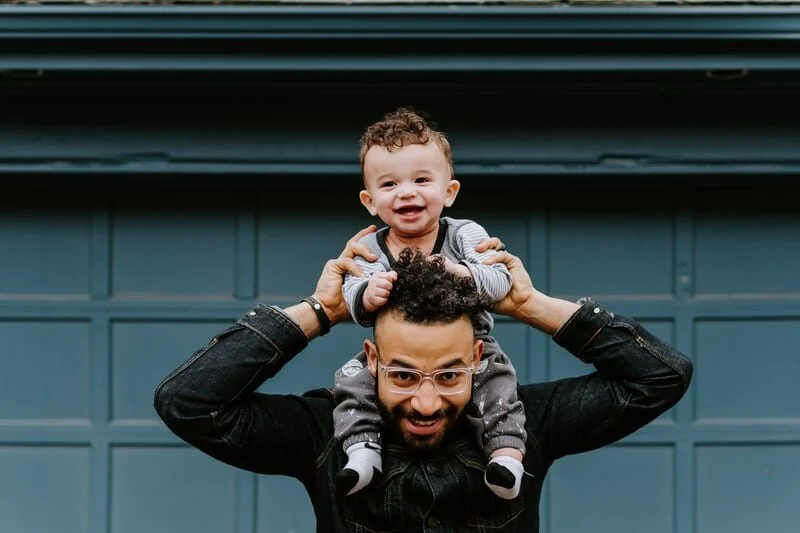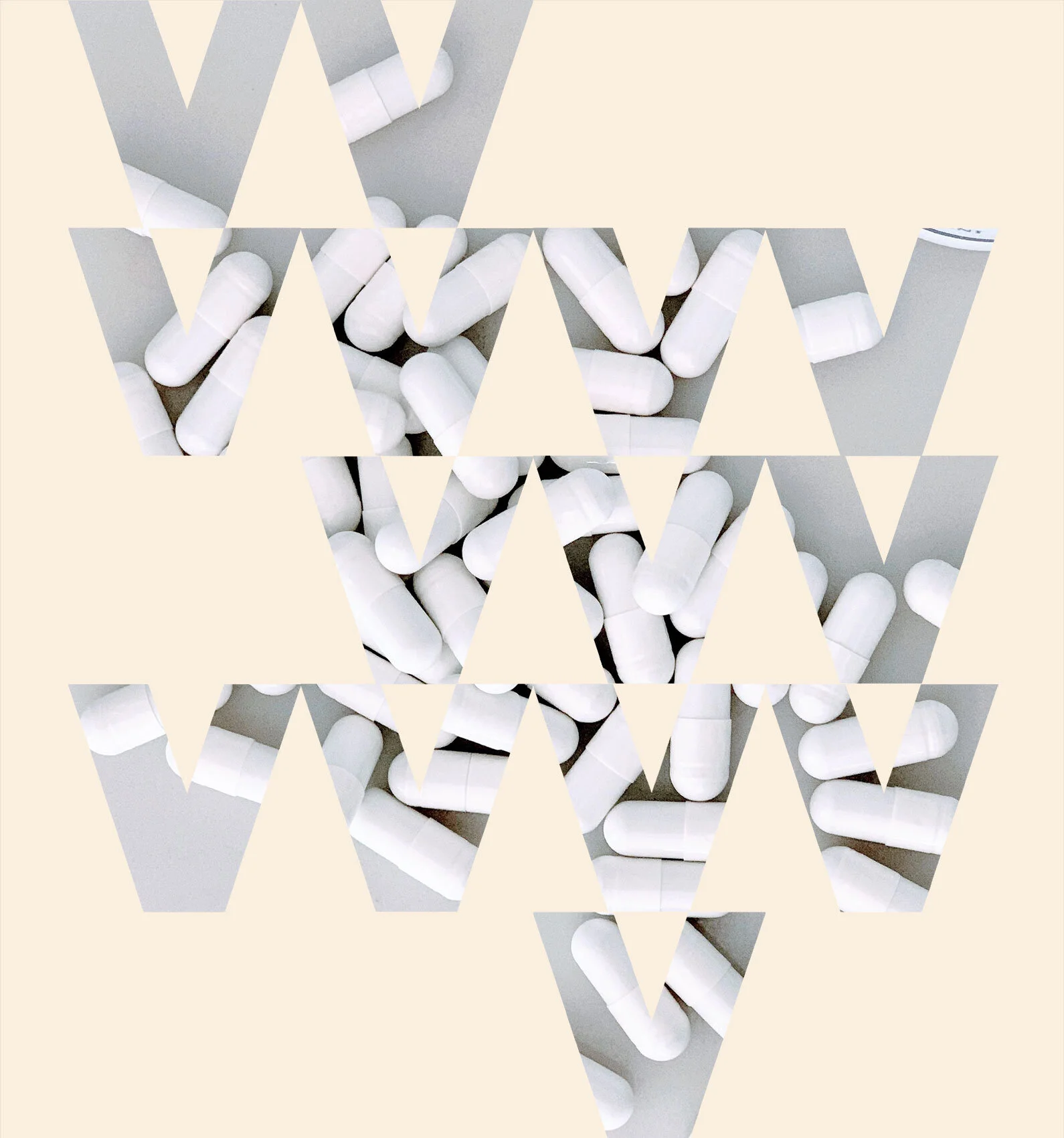Why Experts Are Expecting an STI Surge—and How You Can Stay Safe
VAULT HEALTH
originally published on vaulthealth.com
After a difficult and unprecedented year, many Americans are feeling optimistic again: As more people get vaccinated against COVID-19 and cases continue to fall, life as we knew it is finally returning.
Now, vaccinated Americans are able to resume pre-pandemic activities like indoor dining, going to the gym, and spending time with friends and loved ones.
And as we emerge from this past year of isolation and grief, the ability to connect with one another feels even more precious.
Amidst this desire to connect, medical experts are already seeing a resurgence of another pre-pandemic activity: hooking up. And while they support safe and consensual sex, they’re worried about a new spike in sexually transmitted infections, or STIs.
Why Experts Are Predicting a Post-Pandemic STI Surge
During the pandemic, sexual health organizations around the globe found correlations between easing restrictions and rising STI numbers.
Several surveys conducted by the British Association of Sexual Health and HIV (BASHH) found that clinics got busier when lockdown measures were eased.
In the US, syphilis cases were at an all-time high in 2019, just before the pandemic hit. Now that vaccinated people are hooking up again, experts worry that syphilis and other STI cases will begin to climb.
But there’s another factor at play here: during the pandemic, contact tracers and testing supplies were diverted from STIs to Covid. With resources diverted from STI diagnosis, treatment, and contact tracing, there may be more individuals who have been left undiagnosed or untreated from the past year. Combined with a national reopening, the CDC and other experts believe that 2021 could see an unprecedented STI surge.
Hooking Up? Get Tested
If you’re feeling the desire to make up for lost time, you’re not alone. If you’re vaccinated, single, and/or in a non monogamous relationship, the CDC says that you can resume the activities you enjoyed before the pandemic—including hooking up.
But there are still some precautions you should take to help you and your partner stay safe:
Practice Safe Sex. After a year of little-to-zero contact, it may be tempting to remove all barriers between you and your new partner: Don’t do it. Using a condom correctly every time you have sex can lessen the risk of infection for all STIs. Keep in mind that you can still get some STIs, like herpes or HPV, from contact with your partner’s skin even when using a condom.
Use Alcohol and Drugs Wisely. Research shows that alcohol and some drugs, like methamphetamine, can lower your inhibitions and alter your decision-making abilities, reducing some people’s commitment to safe sex practices.
Get Tested. Many STDs and STIs don’t have symptoms, but can still cause health problems. If you’re regularly sexually active with new partners, consider getting tested every four-to-six weeks, or before each new partner, to stay informed about your sexual health.
Finally, keep in mind that even if you do test positive for an STI, many are curable and all are treatable. However, some infections, like Hep C and HIV, are more serious than others, requiring longer and more intense medication courses, with life-long treatment required for HIV.
If you or your partner tests positive, it’s important to start treatment immediately, which is why getting tested regularly is so important to your and their health.
Want to learn more about STI testing? Talk to your doctor or visit STDcheck or Planned Parenthood for free resources.
DISCLAIMER: This article is for general information purposes only, does not constitute medical advice and is not intended to be relied upon for medical diagnosis or treatment. If you are experiencing an emergency, dial 911 or contact a medical practitioner immediately. Consistent with Vault Health, Inc.’s website privacy policy, Vault Health, Inc. is not responsible for the privacy practices or the content found at links to other websites.
The Evolving Role of the Modern-Day Dad
VAULT HEALTH
The Evolving Role of the Modern-Day Dad
Today, it’s not uncommon to meet dads of all identities and responsibilities. Families with stay-at-home dads, single dads, two dads, and dads that split the caregiving role with their partner are becoming less of an anomaly that they were just twenty or thirty years ago.
Research shows that the increase of American dads who take an active role in their children’s lives has big benefits: In addition to improving the child’s cognitive, emotional, and physical development, active dads suffer from fewer stress-related health issues and cardiovascular events.
But this change in parenting norms isn’t just a fortunate happenstance: Shifts in economic, scientific, and political trends have helped redefine how we approach our roles as fathers.
How Employment Trends Influence Parenthood
Up until the mid-20th century, fathers were the undisputed primary breadwinners for their families. With the advent of industrialization and urbanization, fathers became even more distanced from the household and their families. As fathers earned a living in the workplace, mothers were expected to take on the responsibility of raising the children at home.
But in the latter half of the 20th century, these roles began to shift. In 2001, the number of employed women or women looking for work jumped from 33% in 1948 to more than 60%. By 2019, women made up nearly half of the American workforce (47%), before hitting a 33-year low after the pandemic.
Still, the gradual increase of women in the workforce enabled more straight parents to split or redistribute domestic labor—including child rearing. Put simply, more moms at work enable more dads to spend valuable and impactful time with their kids.
The Impact of Scientific Research
But there was another element at play: scientific research. Historically, research on the parental impact on childhood development focused on mothers. Without the data to demonstrate otherwise, researchers and parents alike assumed that moms played the most significant role in a kid’s life.
But over the past 30 years, there has been a growing body of research on the significant role that fathers play in their children’s lives. The data overwhelmingly shows that kids with active fathers fare better across all childhood development stages and are 43% more likely to earn A’s in school, less likely to develop depression and other psychological issues, and more likely to have higher levels of sociability, confidence, and self-control.
Once the data demonstrated how big an impact father’s have on their kids’ lives, more health and social organizations emphasized the importance of being an involved dad, like The Fatherhood Project, a non-profit program aimed at improving the health and well-being of children and families by empowering fathers to be knowledgeable, active, and emotionally engaged with their children.
But the data helped to inform national policy, too.
Why Policy Matters
It’s no coincidence that the research on a father’s impact on his child’s development began surfacing around the same time as the Family and Medical Leave Act (FMLA), which legally provides certain parents up to 12-weeks of unpaid, job protected leave per year.
More recently, organizations like PL+US have been advocating for stronger family and medical leave for all Americans. Though the benefits of family leave are multifold, it’s clear that when it comes to parenting, parental leave enables dads the opportunity to bond with their children without the threat of losing their job or financial security.
But there are other ways in which policy has impacted the role of the modern-day dad. In its 2013 and 2015 rulings, the U.S. Supreme Court cited children’s well-being as a key argument in favor of marriage equality.
Since then, the rise of same-sex families has inspired a more expansive and progressive notion of what it means to be a parent; and for gay men who often have to use external sources to build their families, their model of parenting is often built on support and commitment, rather than biology or pre-determined gender roles. What’s more, research suggests that LGBTQ parents are likely to divide the child care work evenly, spending an equal amount of time actively being a parent to their children.
Supporting the Health of Every Dad
At Vault, we understand that fatherhood is a lifelong commitment, which is why we’re committed to helping fathers live longer and healthier lives.
Want to learn more about how Vault can help you optimize your health and performance? Book an online visit today to learn more.
DISCLAIMER: This article is for general information purposes only, does not constitute medical advice and is not intended to be relied upon for medical diagnosis or treatment. If you are experiencing an emergency, dial 911 or contact a medical practitioner immediately. Consistent with Vault Health, Inc.’s website privacy policy, Vault Health, Inc. is not responsible for the privacy practices or the content found at links to other websites.
Why Improving Sexual Performance Isn’t Just For Straight Couples
VAULT HEALTH
originally published on vaulthealth.com
As scientists, researchers, and clinical experts, we know that health concerns don’t discriminate based on gender or sexual identity.
Even so, it’s clear that in many spaces, discussions on sexual performance, low libido, and erectile dysfunction (ED) are often centered on the cis-straight couple.
But not here. At Vault, we’re committed to providing inclusive care year-round, because we understand that sexual performance concerns affect people of all ages, backgrounds, and identities.
In honor of PRIDE month, we want to uplift your health and sex life. Specifically, we’re highlighting the ways in which performance issues can affect your health and how Vault can help put the fire back into your engines.
Why Performance Matters
A downturn in your sex life can be frustrating—but evidence shows its impact can affect your physical wellbeing too. Recent data shows that not having sex can impact your health by increasing your risk of prostate cancer and weakening your immune system.
And if you or your partner suffers from ED, there are additional health risks.
An estimated 18 million people in the US live with erectile dysfunction. One study showed that stress and psychological factors are some of the most common causes of ED. But leaving ED treated can also exacerbate stress, which can have ramifications on your mental and physical health.
What’s more, we know that people with ED are at higher risk for heart disease, stroke, and even death, thanks to a review of several studies published in the Journal of Sexual Medicine. We also know that gay and sexual minority adults are more likely to experience adverse cardiovascular outcomes than straight adults.
But even newer studies published in the Journal of the American College of Cardiology found that medications like Viagra and Cialis—those used in Vault’s Sex Kit and Libido Kit—may help reduce the rate of cardiovascular events, like heart attacks and strokes. In other words, treating you or your partner’s ED won’t just improve your sexual performance—it may also help save your lives.
Put the Fire Back in Your Sex Life with Our Treatment Combos
The prevalence of low testosterone increases with age starting at age 40, and can drop as much as 1% each year. As this happens, issues with sex can increase, like low libido and ED. That’s when leveraging the power of our effective kits can help.
Combining our Testosterone Replacement Therapy (TRT) with our Sex Kit or Libido Kit can provide effective support to improve erections, increase libido, boost sexual stamina, intensify orgasms, and improve overall sexual satisfaction.
According to the research mentioned above, these kits won’t just improve your sex life—they may also improve your health. Here’s how they work:
Sex Kit
Our Sex Kit uses high-quality ingredients and cutting-edge science to address erectile dysfunction from the inside out, by increasing blood flow to the penis, boosting dopamine, and turning on the neurologic stimulation needed for erections.
The kit ($75 per month) includes:
Tadalafil + apomorphine lozenges
Tadalafil tablets
Oxytocin oral drops
Libido Kit
The three powerful ingredients in this kit—bremelanotide, tadalafil, and oxytocin—improve blood and nerve flow synchronously to maximize libido, improve arousal and romantic connections, increase sexual stamina, intensify orgasms, and strengthen erections.
The kit lasts for three months ($149 per month) and includes:
5ml bottle of bremelanotide nasal spray
18 tablets of tadalafil (10 mg each)
54 oxytocin tablets (100 IU each)
At Vault, we believe in empowering you to take pride in your performance and physical health. If you’re interested in treating low T, addressing your ED, or increasing sexual satisfaction, book an online visit with Vault to see if our Kit combinations are right for you.
DISCLAIMER: This article is for general information purposes only, does not constitute medical advice and is not intended to be relied upon for medical diagnosis or treatment. If you are experiencing an emergency, dial 911 or contact a medical practitioner immediately. Consistent with Vault Health, Inc.’s website privacy policy, Vault Health, Inc. is not responsible for the privacy practices or the content found at links to other websites.
Dana Donofree on Surviving Breast Cancer and Starting AnaOno
JASPER
originally published on hellojasper.com
As an experienced fashion designer, it didn’t take long for Dana Donofree to recognize the significant gap in the lingerie market when it came to serving—and representing—the diversity of people affected by breast cancer.
After her diagnosis, Dana embarked on a ten year journey of building and growing an inclusive line of bras designed specifically for people like her.
A play on her own name, but without the double Ds, AnaOno has merged into a trailblazing resource for survivors looking to re-discover their power and beauty.
Read on to learn how the brand has evolved over time, and why Dana stays committed to her mission of diversity and inclusion.
Can you tell us a bit about your cancer experience?
I was diagnosed with breast cancer at the age of 27. Soon afterward, I felt catapulted into a world made for a much, much older woman—a world more designed for someone like my grandmother. I was never accompanied by another young woman in the chemo or waiting rooms, and for many other reasons continued to feel isolated in the experience—as if I didn't belong.
What inspired you to start your company, AnaOno?
After chemotherapy, I had a bilateral mastectomy with implant reconstruction, and I quickly discovered how difficult it was to find a bra to suit my new body. Doctors advised me not to wear underwire and that molded cups weren't going to fit me anymore. Ultimately, they recommended sticking to a sports bra or camisole—or better yet—nothing at all. Though I had no problem with the idea of going braless, I realized that it would be impractical for many occasions—like going to work, when I wanted to feel protected and feminine.
So, I leveraged my skill set as a fashion designer and started designing bras that would fit me and help me feel comfortable in the world again. I thought I was the only one facing this dilemma, given that nobody was selling or making these kinds of bras online. But soon enough, I realized that I wasn’t alone. Thousands of women felt the same way and were searching for something that would make them feel good and comfortable in their new body. And that’s how AnaOno began.
How did your identity as a cancer survivor help shape your business?
In a way, AnaOno has become my alter ego. In the very beginning, she was feminine, sexy, and beautiful. She was all the things I wasn't feeling inside because my eyelashes were gone, my eyebrows were gone, my hair was gone, my nipples were gone, and my breasts were gone. AnaOno helped me reclaim a part of my identity that felt harder to access at that point in my survivorship.
As the brand has evolved, it’s continued to serve as a powerful outlet for me to discover new phases of my survivor journey.
Ten years later, I’m able to look back on the experience and see not only how AnaOno has shaped my identity, but how it has been shaped by my experience. There were times when I was an angry person, exhausted from seeing our friends and models die of breast cancer, and the brand in turn began to change and invest in stage four metastatic breast cancer research.
Throughout so many of these organizational transitions, I recognized that I was also going through transitions as both a patient and an advocate.
At some point, as a cancer patient, you realize that the cancer is never over—it will always be a part of your life and your story. It’s something I wake up every morning thinking about, and I’m extremely fortunate to be able to channel that energy into helping other people find comfort and power in themselves again.
You’ve helped to fill an important void in the fashion industry when it comes to embracing bodies of all shapes, needs, and abilities. Where did that decision come from?
When I first launched the line in May of 2014, an important part of my mission was to show the world what breast cancer really looked like. At that time, I couldn’t find any brands or retailers using survivors as models when selling their product. It was the biggest slap in the face to see brands marketing their bras to breast cancer patients and survivors while showcasing them on healthy, beautiful women with healthy, beautiful breasts.
Even though these solutions were being marketed and sold to people like me, we weren’t actually being represented through their modeling and marketing. As a fashion design professional, this was enraging. As a cancer survivor, it was doubly enraging.
From that moment forward, I knew that I would use real people who had faced the same things I faced as the models for our product. We were even cited in a few fashion outlets for being one of the first brands to be truly representative of this market.
Our commitment to this representation continues to compound itself year after year.
How did the industry react to this decision?
When we premiered at New York Fashion Week in 2017 with #CancerLand, our runway was regarded as groundbreaking: We showed the scars, the missing breasts, the missing nipples, all of it. And the question that the press asked most often was: “How did you find such a diverse runway?”
Truthfully, I was taken aback by this question. Cancer doesn't discriminate, so why would we?
I've even been told by some writers that we’re still one of the few websites that represent women of color—that's also a MAJOR problem.
There are enormous racial disparities within the breast cancer community when it comes to access to healthcare and access to treatment. And, of course, there are pervasive disparities in the fashion community, too. So there’s a lot that we’re fighting against. But being diverse is important. Being inclusive is important. And that’s never going to change. And hopefully, with time, more and more brands will start to feel the same.
As the industry continues to improve its inclusion of all bodies, where do you think it could do better to support people living with cancer?
For better or for worse, “being inclusive” is now a hip thing to do. But many major lingerie lines are still missing the mark.
It's not just about representing a certain body type or skin color. There are also different abilities and body shapes to consider. We like to call ourselves “boob inclusive” because not every customer we have has two breasts—or even one. For us, being inclusive is being able to serve patients with every imaginable outcome, whether that be two breasts, one breast, no breasts, or new breasts.
At the end of the day, you can talk about two breasted females all day long in different sizes and different colors. But where is your representation of the nearly 4 million women—just in the United States—living with breast cancer? Where is their representation?
What wisdom can you share about your experience for other patients and survivors?
Being a patient for 10 years, I know how exhausting, stressful, and overwhelming the experience can be. My advice would be to go easy on yourself, and to know that if all you can focus on is putting one foot in front of the other, that's enough.
When you have cancer, you're living your life in the world of the unknown—and that's not an easy thing to do. When the veil is finally lifted, you’ll see what life really looks like and you'll be ready to fill it with joy, love, and the things matter most after a diagnosis.
It will take time to adapt and to find your new way. But once you do, it's a beautiful place to be.
Laura Rubin on Surviving Breast Cancer and Starting AllSwell Creative
JASPER
originally published on hellojasper.com



















